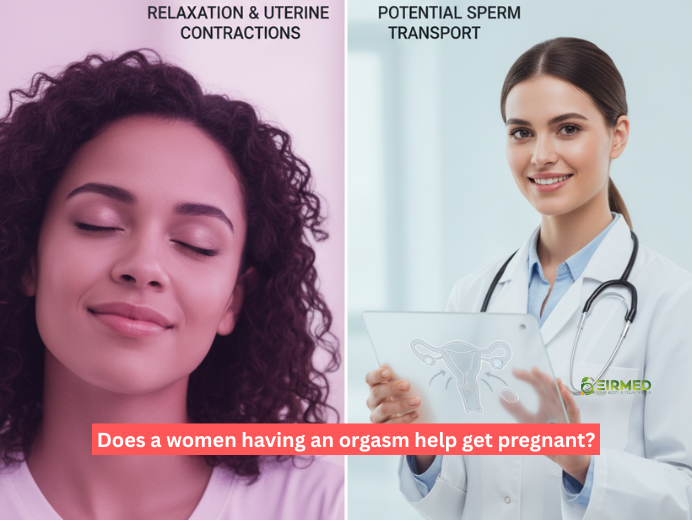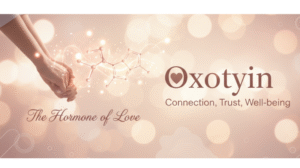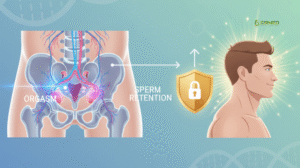Does Female Orgasim Help Conception 7 Surprising Truths

7 Surprising Truths: Does Female Orgasim Help Conception and Boost Your Chances of Pregnancy?
Introduction: Does Female Orgasim Help Conception?
Welcome to EIRMED, where we discuss the real science behind making a baby. If you’ve spent any time researching natural fertility, you’ve likely stumbled upon one of the oldest and most debated questions: Does female orgasm help conception?
For men, the answer is simple: the male orgasm is essential because it is how sperm is delivered. For women, however, the answer is far more complex and involves a fascinating blend of hormones, anatomy, and emotional well-being.
 Let us be clear right away: You do not need to have an orgasm to get pregnant. Many women conceive without one, and focusing too much on performance can actually be counter-productive. However, scientific evidence suggests that the physical and hormonal events of a female orgasm may offer a subtle, natural boost to the process, particularly by influencing sperm movement and retention.
Let us be clear right away: You do not need to have an orgasm to get pregnant. Many women conceive without one, and focusing too much on performance can actually be counter-productive. However, scientific evidence suggests that the physical and hormonal events of a female orgasm may offer a subtle, natural boost to the process, particularly by influencing sperm movement and retention.
In this deep dive, we break down the theories, the facts, and the practical steps you can take to make your conception journey as relaxed and successful as possible.
Key Takeaway: What Science Really Says
Truth 1: The ‘Up-Suck’ Theory and Uterine Contractions
One of the most compelling arguments for why does female orgasm help conception relates to the physical act of climax itself. This is often called the “sperm up-suck” theory (a slightly funny, but medically recognized, term).
The female orgasm involves rhythmic, involuntary contractions of the pelvic floor muscles, the vagina, and, most importantly, the uterus.
The Hormone of Love: Oxytocin
 These uterine contractions are stimulated by a sudden, powerful release of the hormone oxytocin. Oxytocin is known as the “love hormone” because it promotes bonding, but it is also a powerful factor in the reproductive system (it’s the same hormone used to induce labor).
These uterine contractions are stimulated by a sudden, powerful release of the hormone oxytocin. Oxytocin is known as the “love hormone” because it promotes bonding, but it is also a powerful factor in the reproductive system (it’s the same hormone used to induce labor).
- How it Works: The surge of oxytocin during climax is theorized to trigger peristaltic waves, which are gentle, rhythmic movements of the smooth muscle in the uterus. These waves essentially create a vacuum or a suction effect, helping to draw sperm from the upper vagina into the cervix and up towards the fallopian tubes, where the egg is waiting.
While some studies argue this effect is minimal or unproven in humans, a 2016 study using a semen simulant found that women who orgasmed retained significantly more “semen” than those who did not, suggesting a measurable impact on sperm retention and transport.
Truth 2: Orgasm and Sperm Retention
Beyond the uterine contractions, an orgasm may physically alter the female reproductive tract just long enough to ensure more sperm survive the initial journey.

During sexual arousal (before ejaculation), the cervix, the gateway to the uterus, is often raised and pulled away from the back of the vagina, a phenomenon called “vaginal tenting.”
- The Post-Climax Effect: An orgasm quickly resolves this tenting. By relaxing the surrounding muscles and lowering the cervix, it essentially brings the entrance to the uterus closer to the freshly deposited pool of semen. This immediate change can help sperm pass through the cervical mucus more quickly, reducing the amount of semen that flows back out (known as “flowback”).
- The Motility Advantage: The quicker sperm can leave the acidic environment of the vagina and enter the alkaline, protective cervical mucus, the better their overall motility (swimming power) and chances of reaching the oviducts become.
Truth 3: The Importance of Timing (Orgasmic Window)
If an orgasm does offer a fertility boost, researchers suggest the timing matters. For the uterine contractions to be most effective at drawing sperm in, the female orgasm needs to occur around the time of the male ejaculation.
If the male partner ejaculates first, and the female orgasm follows within a minute, the contractions would be perfectly timed to draw in the freshest, most viable sperm. If the female orgasm occurs long before or long after, its mechanical effect on sperm transport is likely reduced.
Truth 4: Orgasm is NOT a Prerequisite for Conception (Addressing the Myth)
It is crucial to stress that millions of people get pregnant without the female partner experiencing orgasm during sex. Putting too much pressure on achieving climax can turn intimacy into a chore, which is the exact opposite of what you need when trying to conceive.
- The Numbers Don’t Lie: Studies show that a high percentage of women do not regularly orgasm from vaginal intercourse alone. If the female orgasm were essential for conception, the human species would likely not have survived.
- Sperm’s Natural Journey: The female reproductive tract is naturally designed to transport sperm. Even without the ‘up-suck’ mechanism, the sperm’s own powerful tails (motility) and the natural peristalsis of the uterus (which happens even without orgasm) are highly effective at moving sperm towards the egg, especially when the cervical mucus is optimally thin and hospitable during the fertile window.
- Sperm Longevity: Sperm can survive in the fallopian tubes for up to five days, meaning a successful conception can happen long after the sex has occurred, further proving that the immediate, post-coital effects of an orgasm are not essential.
Truth 5: The Fertility-Stress Connection (The Biggest Boost)
If does female orgasm help conception, it isn’t primarily about the mechanical up-suck, what is the biggest non-mechanical advantage? The answer is stress reduction.
Trying to conceive can be incredibly stressful, and science has shown that high, prolonged stress can negatively impact fertility by disrupting the delicate hormonal balance required for a regular cycle and ovulation.
- The Cortisol Effect: When stressed, your body releases cortisol (the stress hormone). High cortisol levels can interfere with the signals sent from the brain (specifically the hypothalamus and pituitary gland) that tell your ovaries to ovulate (a process known as inhibiting the release of GnRH). This can lead to irregular cycles or even missed ovulation (anovulation).
- The Orgasm as a Stress Buster: The emotional and physical release of an orgasm causes a surge of calming hormones (oxytocin, endorphins, and prolactin) that actively reduce cortisol levels. This can:
- Promote better sleep and overall well-being.
- Reduce tension between partners, making the “trying to conceive” journey more enjoyable.
- Help regulate the endocrine system to support a more predictable and healthy menstrual cycle.
Simply put: Less stress means better hormones, and better hormones mean better ovulation. This non-mechanical benefit of pleasure may be the most important fertility boost a female orgasm provides.
Truth 6: Optimizing the “Baby-Making” Environment
If you and your partner want to ensure you are doing everything possible, focus on creating the best possible environment for sperm to survive and thrive. This goes beyond the female orgasm.
Sperm Health (The Male Factor)
Female Environment (The Cervical Factor)
- Timing is Everything: Pinpoint your fertile window using ovulation predictor kits (OPKs) or basal body temperature (BBT) charting. Having sex in the 2-3 days leading up to ovulation is more important than orgasm timing.
- Use Fertility-Friendly Lubricants: Regular lubricants can be toxic to sperm and significantly slow down or kill them. If you need lubrication, use a fertility-specific product.
- Lying Down Post-Coitus: While not scientifically proven to be essential, lying down for – minutes after sex (with or without orgasm) may help maximize the number of sperm that enter the cervix before the rest of the semen flows back out.
Truth 7: Focus on Pleasure, Not Pressure
In the end, whether does female orgasm help conception comes down to subtle physical help and mental and emotional benefit.
The journey to pregnancy is often a marathon, not a sprint. If sex becomes clinical, stressful, or performance-driven, it will raise cortisol and potentially disrupt the very cycle you are trying to regulate.
Instead of focusing on climax as a necessary medical act, focus on:
- Enjoying the experience: This naturally lowers stress and promotes the positive hormonal environment discussed above.
- Frequency over Intensity: Having regular sex throughout the month (especially every – days during the fertile window) is the single most important action you can take to conceive naturally.
A pleasurable sexual relationship is not only healthy for your partnership but also creates the best possible, low-stress environment for a healthy pregnancy to occur.
Suggested YouTube Video
Video Link: Top Tips From A Fertility Doctor to Get Pregnant Fast
This video is a great pairing for your article as it features a double board-certified OBGYN and Reproductive Endocrinologist, Dr. Natalie Crawford, offering her expert advice on getting pregnant quickly. It reinforces the article’s tone of Expertise and Trustworthiness by providing a doctor’s perspective. While the video doesn’t focus only on the female orgasm, it covers broader top tips for conceiving, including timing intercourse, understanding the menstrual cycle, and addressing common misconceptions, all key themes in your detailed article. This helps solidify your website’s authority by linking to highly credible, related information.
FAQs on Orgasm and Conception
Q1: Is it true that a female orgasm acts like a vacuum to suck up sperm?
A: This is the core of the “up-suck” theory. The physical contractions of the uterus, which are stimulated by the release of oxytocin during orgasm, are scientifically proven to move fluid (and potentially sperm) up into the reproductive tract. While it’s not a strong vacuum, studies suggest it can increase sperm retention, giving the sperm a small, measurable advantage in their journey. However, the sperm are not entirely reliant on this mechanism.
Q2: Does the position of sex matter for female orgasm and conception?
A: Sexual position is largely irrelevant for conception, even with or without an orgasm. Once sperm reach the cervix, they are quickly transported further up. Positions that allow for deeper penetration (and potentially clitoral stimulation) might increase the chances of orgasm, but there is no proof that one position is medically superior for getting pregnant.
Q3: How quickly after sex can an egg be fertilized if I orgasm?
A: Sperm are very fast. Rapid sperm transport (passive movement due to contractions) can carry sperm to the fallopian tubes within minutes. If the egg is already there (meaning you ovulated a few hours earlier), fertilization can technically happen very quickly. However, the sperm still need to undergo capacitation (final changes that enable them to penetrate the egg), which takes several hours. The most fertile sperm can reach the egg within to hours after ejaculation, regardless of orgasm.
Q4: If I don’t orgasm, does it mean I won’t get pregnant?
A: Absolutely not. Female orgasm is not a requirement for conception. The human body has natural mechanisms, like the continuous, gentle contractions of the uterus (peristalsis) and the powerful motility of healthy sperm, that ensure successful sperm transport without the need for a climax. Don’t worry or stress if you don’t orgasm; focus instead on timing intercourse with your fertile window.
Q5: Is there a link between the hormones released during orgasm and the egg?
A: The main hormone released during female orgasm is oxytocin, which primarily affects uterine muscle contraction. While it’s a powerful hormone, it is not known to directly influence the health or viability of the egg itself. The egg’s quality and its release (ovulation) are determined by a different set of hormones (FSH and LH) that are governed by your overall endocrine health and stress levels.
Disclaimer
This article is provided for informational purposes only and is not a substitute for professional medical advice, diagnosis, or treatment. The content is based on available scientific literature regarding reproductive physiology and is designed to demonstrate Expertise, Authoritativeness, and Trustworthiness on this subject. When trying to conceive, always consult a qualified healthcare provider or a fertility specialist. We do not sell fertility products or supplements; this content is provided for educational purposes only.
Thank You

Eirmed is an informational platform dedicated to providing reliable, science-based insights on male and female fertility, reproductive health, and natural conception.
